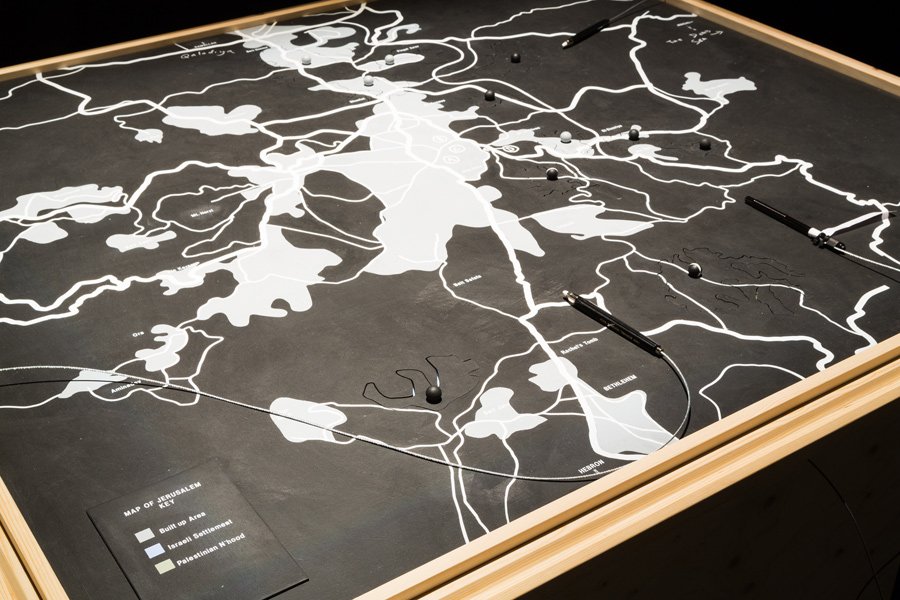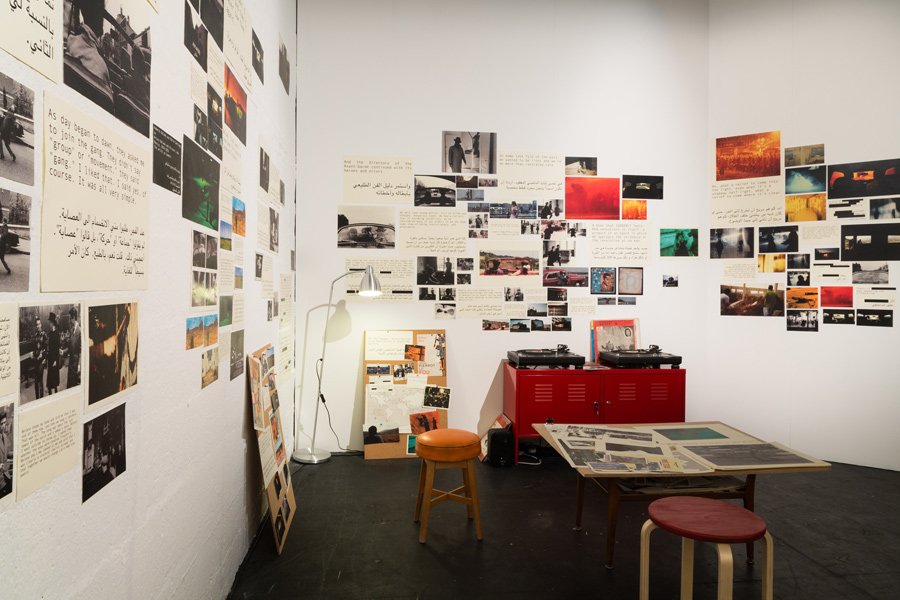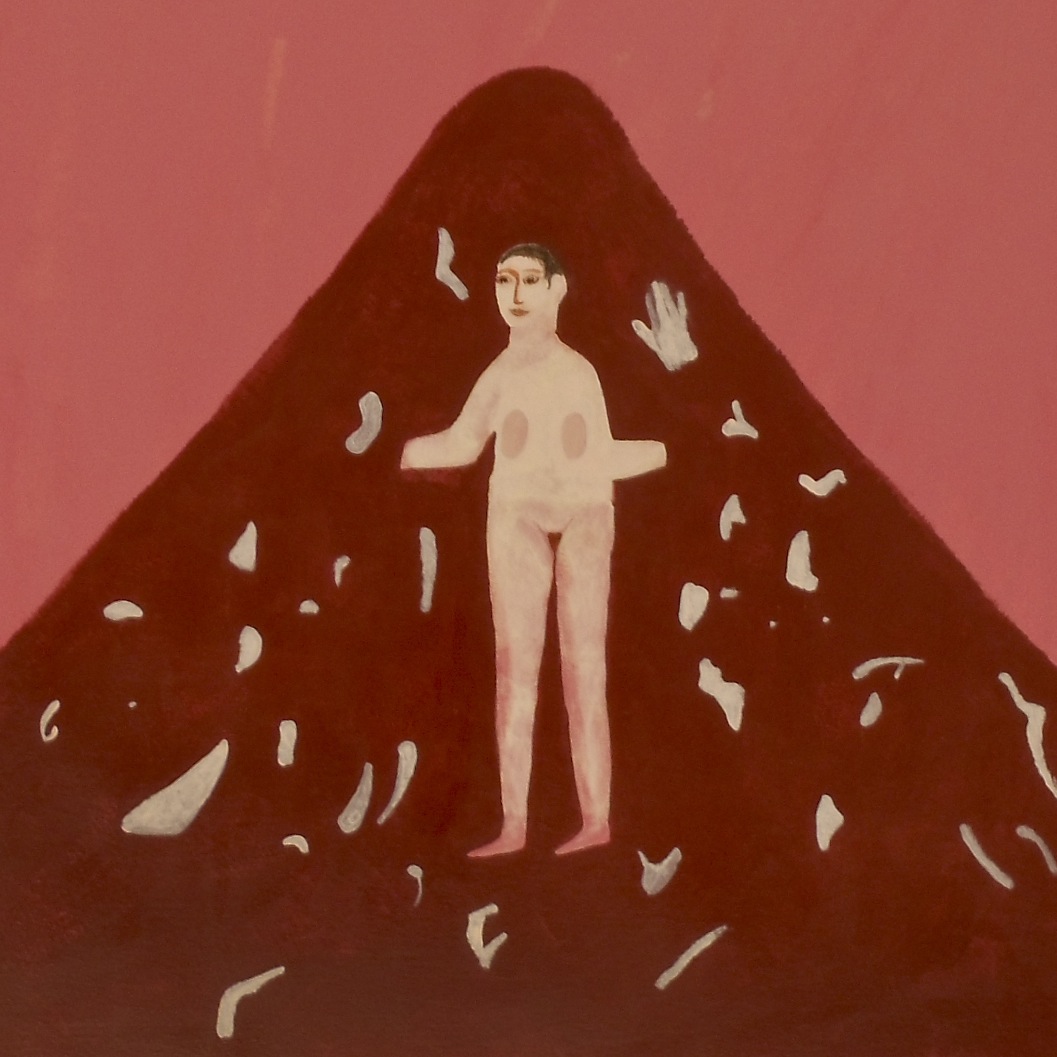Palestine - ‘a potentiality constantly on the threshold of physical reality’‘
‘From the green hills and sun-drenched coast of Galilee to the sacred sites of Jerusalem’s Old City, the dramatic desert of Wadi Rum to the vibrant reefs of Dahab’, reads the summary on the back of the DK Eyewitness Jerusalem, Israel, Petra & Sinai 2012 Travel Guide. ‘This guide provides the insider tips every visitor needs’, it claims, as if, without a doubt, it most certainly leads straight to the best attractions the regions have to offer. Using this travel guide as a starting point, Palestinian artist Bisan Abu-Eisheh entitled his installation Sorry, Your Search for ‘Palestine’ Produced no Results, which was recently exhibited at the Institute of Contemporary Arts (ICA) in London as part of the Shubbak Festival.
Indeed, as a geographical entity, Palestine does not ‘exist’ in the same way that the word and symbol of Palestine do. As a place, Palestine only exists abstractly, as a space of memory and future hope; Palestine itself, then, is a possibility, a potentiality that is constantly on the threshold of physical reality. Representing a geography of Palestine entails an engagement within spaces of imagination, not just of the actual land, but also of the ideological notions of territory as a construct of social and national identities. Using this logic of territory as national identity, Abu-Eisheh’s installation invited audiences to participate in the concept of the formation of Palestine by using chalk on a blackboard, on which a militaristic map of Jerusalem was traced in white paint, in addition to invisible ultraviolet paints, which could only be seen through the use of ultraviolet torches.
In Abu-Eisheh’s work, the landscape of Palestine became a process of socialisation. With the audience adding their own annotations and personal observations to the ‘map’, they recreated the symbolic and mythical characteristics comprising Palestine, and in turn, participated in the construction of a new national identity, Nonetheless, the ultraviolet lines created a deeper second dimension in the installation. Being on a military map, they suggested a process of transformation from the abstract notion of national identity into a subsequent concrete formation of physical borders for that identity. The military ‘planning’ suggested by the invisible lines, which were not conspicuous, as they required the use of ultraviolet torches in order to be seen, constituted the basis for the territory of this new national identity.

Bisan Abu-Eisheh - Sorry, Your Search for ‘Palestine’ Produced No Results (© ICA)
This second dimension of Abu-Eisheh’s installation referred specifically to the power discourses of representation and the armed conflict associated with it, using the tense relationship between one national identity versus the other as its basis. While these power discourses were embedded within the pages of the travel guide with which the artist engaged, the installation itself was a means for understanding and restructuring systems of representation as power, and the creation of meaning as a form of control.
Along with five other Palestinian and British artists, Abu-Eisheh undertook a year-long residency at the Delfina Foundation in London and the ArtSchool Palestine in Ramallah, in collaboration with the British Council for the Points of Departure project. On the same note of power discourses and representation, artist Jeremy Hutchison’s installation, Fabrications, presented a series of unwearable jeans. The jeans were deliberately produced and styled to be impossible to wear, and served as a reference to the state of working and living in the West Bank in Palestine, proposing an alternative logic within a commercial setting. Questioning what it means to be ‘normal’, the jeans recalled ‘moulds’ of realities, ready-made and intended to be publicly accepted as norms. Similarly, Olivia Plender’s Blind Eye installation questioned visibility in relation to the narration and further manipulation of history. Starting with the legitimacy of authority, the work contrasted a rehearsed scene of actors in an everyday setting with documentation footage from the Tawifq Canaan Collection of Palestinian Amulets.
… Palestine itself, then, is a possibility, a potentiality that is constantly on the threshold of physical reality. Representing a geography of Palestine entails an engagement within spaces of imagination, not just of the actual land, but also of the ideological notions of territory as a construct of social and national identities
On the other hand was Bashar Alhroub’s piece, The Road Leads Me To … , which recreated the geography of Palestine based on the artist’s own imaginings. Taking the concept of disassociating collective and personal national identity further, Alhroub’s mixed media collage recreated Palestine through meditations of place and memory based on the artist’s own experiences. The figures created in each paper collage reflected a shift in perception from a collective to a more personal image of Palestine. Collage, generally speaking, can be considered a medium of reconstructing and exploring symbols in different contexts, and accordingly, through the use of this medium, Alhroub presented national identity as a continuous journey of changing meanings though disorienting senses of territory and knowledge related to collective public consciousness.

Basel Abbas & Ruanne Abou-Rahme - The Incidental Insurgents - (© ICA)
In The Road Leads Me To … , Alhroub showcased the difficulty of embarking on an imaginary journey, seeking an identity existing without any particular borders. Expanding on this idea of a Palestine in a continuously liminal state towards its existence as a thing of fiction, Basel Abbas and Ruanne Abou-Rahme’s The Incidental Insurgents installation recreated Palestine as an abstract moment of the present tense, metaphorically embodied within the ‘incubator’ of the artist’s studio. Through the installation, the artists exhibited a studio space filled with collages of fictional and historical texts, where Palestine became a constant subject of research, a means of meditating on the past, and a creation and imagination of the future.
As a whole, Points of Departure engaged in power discourses of representation, dissembling, recreating, and shifting their poles in the process. Throughout, the artists exhibiting led audiences into a space of nothingness where they were ‘no one’. Within this state, different perspectives were revealed, for it is only within such states where one has no status that they are able to experience the poetics of potentiality. In this state, nothing is certain, and one is constantly in the in-between, in its openness, possibilities, and transience. Here, one is able to shift between perspectives, substitute identities, and recreate contexts and knowledge; yet, for all the freedom this state confers, the most acute feeling one experiences is that of fear, sparked by the myriad impossible questions they encounter.

